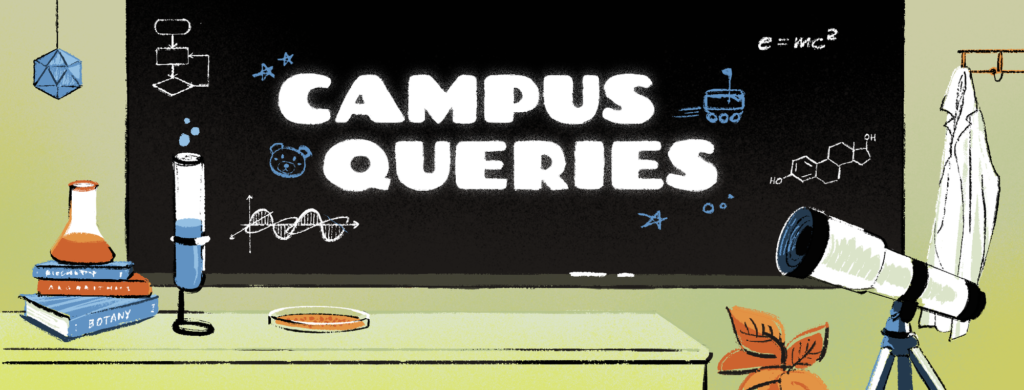Campus Queries: What is the metaverse and how can it be used?

(Ayumi Bergan/Daily Bruin)
By Caroline Sha
Feb. 7, 2022 9:29 p.m.

Campus Queries is a series in which Daily Bruin readers and staff present science-related questions for UCLA professors and experts to answer.
Q: What is the metaverse, and what can it be used for?
A: The metaverse is an embodied digital environment where people can interact and has applications in fields such as medicine, business and academia, experts say.
After Facebook announced its name change to Meta in October 2021, searches for “metaverse” jumped to a record high, according to data from Google Trends. Related search results showed that individuals were also interested in how it related to other technological trends such as cryptocurrency.
The metaverse is a 3D environment that allows for the participation of multiple people, said Esther Grassian, a retired emerita librarian at UCLA. This space could be in the form of a game, but it could also be used for other purposes, such as education, she added.
When Second Life, an online virtual world where people created avatars for themselves, had an educational package in the 2000s, many universities built versions of their buildings within the program’s digital world, she said. Grassian said she used the software to host library programs and teach information literacy classes.
During one project, the graduate students made an exhibit of different posters and had people from around the world visit, unconstrained by the limitations of distance.
Gary Yeritsian, a lecturer of sociology at UCLA, said he believes the metaverse is a virtual space where people can use avatars to communicate in dynamic, semi-realistic ways in contrast to the static state of social media such as Facebook.
“What’s interesting to me is the idea of creating, essentially, an embodied internet,” Yeritsian said. “We think of the internet as a space of relatively disembodied communication, so if we develop these kinds of digital bodies that are connected into our sensory systems, it makes the internet a much more kind of engaging place.”
One positive of Second Life was that people could make their avatars whatever they wanted, meaning people had more freedom to express themselves and meet people they wouldn’t ordinarily meet, Grassian said.
Similarly, Michael Karanicolas, the executive director of the UCLA Institute for Technology, Law and Policy, said he believes the metaverse to be a more immersive version of cyberspace involving the use of new technologies. The metaverse would allow the incorporation of new dimensions and sensory aspects to current digital experiences, he said.
However, there are still some problems that prevent a fully-fledged 3D world from being a reality, said Daniel Batista, a programmer analyst II at UCLA Health. For example, modern virtual reality headsets are uncomfortable to wear for more than an hour or two, preventing people from spending whole days in a VR environment.
Still, there are applications of VR and the metaverse that can still be useful in other industries, Batista added.
His lab at UCLA Health uses VR to gain more information on patients’ brains. For example, in one experiment, researchers put patients in a virtual world and give them certain elements to remember and then change the environment to see how they locate themselves in this new environment, he said.
The researchers use game engines to make these 3D environments, he said. These engines allow patients to see 3D models that researchers can then program to trigger visual and audio effects.
Batista added 3D models might be useful in medicine for discussing treatment. 3D models may also be helpful for businesses, he said.
However, experts also have concerns about the possible ramifications of the metaverse.
One such problem is the potential addictiveness of the metaverse, Karanicolas said. Platforms such as Facebook are already incentivized to have algorithms that are designed to maximize engagement, and with the additional immersiveness of the metaverse, addiction could become an even bigger problem, he said.
Karanicolas said the immersiveness of the technology could allow people to be more easily manipulated and believe false narratives, leading to increased tendencies toward extreme viewpoints.
[Related: UCLA researchers explore factors behind online spread of conspiracy theories]
In addition, Yeritsian said there could be consequences for social identity within the metaverse. Though it may be an exciting experience at first to go through different identities, the novelty will eventually wear off, and people will be left with only a sense of alienation and emptiness, he said.
Without the same grounded identities that emerge from real-life interactions, people may lose their sense of individuality within the digital space of the metaverse, Yeritsian added.
“The human being starts to look like just a series of ones and zeros,” he said. “It just gets reduced to a purely technological output in a kind of automated system, so I don’t know if there’s space in that vision for human autonomy.”
[Related: Opinion: Metaverse threatens human connection, offers more problems than solutions]
In addition, Karanicolas said that because the legal principles on which regulatory structures are based were made decades or centuries ago, it is often difficult to regulate emerging technologies. This is currently true for the existing state of the internet, as regulators often struggle to keep up with new developments.
Yeritsian said a 3D metaverse would also be subject to restrictions and commercial forces that already shape social media. Platforms such as Instagram and Twitter utilize targeted advertising, which might also show up in the metaverse, he said.
Participants may also have to pay to access certain parts of the metaverse, Yeritsian added.
The private sector having a major role in the metaverse is not something unexpected, as it has been involved in the growth and spread of the internet, Karanicolas said. However, without proper regulation, companies would focus on maximizing profit for their shareholders, rather than developing the metaverse in a socially beneficial way, he added.
The tension between public good and commodification has existed since the start of the internet, with some arguing for intellectual property interests while others have argued for fair use, he said.
Another example of this tension is the debate over nonfungible tokens – or NFTs – which have recently become more prominent in the public consciousness, Batista said. He said he is apprehensive about the idea of these computer-generated images being sold for money since they involve buying something one does not need and does not even exist.
In today’s current society, the burden of regulation falls on the government, Karanicolas said, especially as issues surrounding the metaverse arise.
He added because of the uncertainties regarding the effects of the metaverse, there is a need to research and reflect on the social, political and legal challenges the metaverse could pose. For example, whether government surveillance becomes a major issue in the metaverse is dependent on how control of it is distributed and if there are appropriate privacy regulations.
Though there are many challenges regarding the development of the metaverse, Karanicolas believes they can be addressed with the proper consideration and research.
“It’s important to approach these challenges from the perspective of facilitating a robust civic discourse,” Karanicolas said. “So I absolutely agree with that kind of challenge. It’s not insurmountable, it’s not inevitable, but it’s certainly a concern that I share.”

